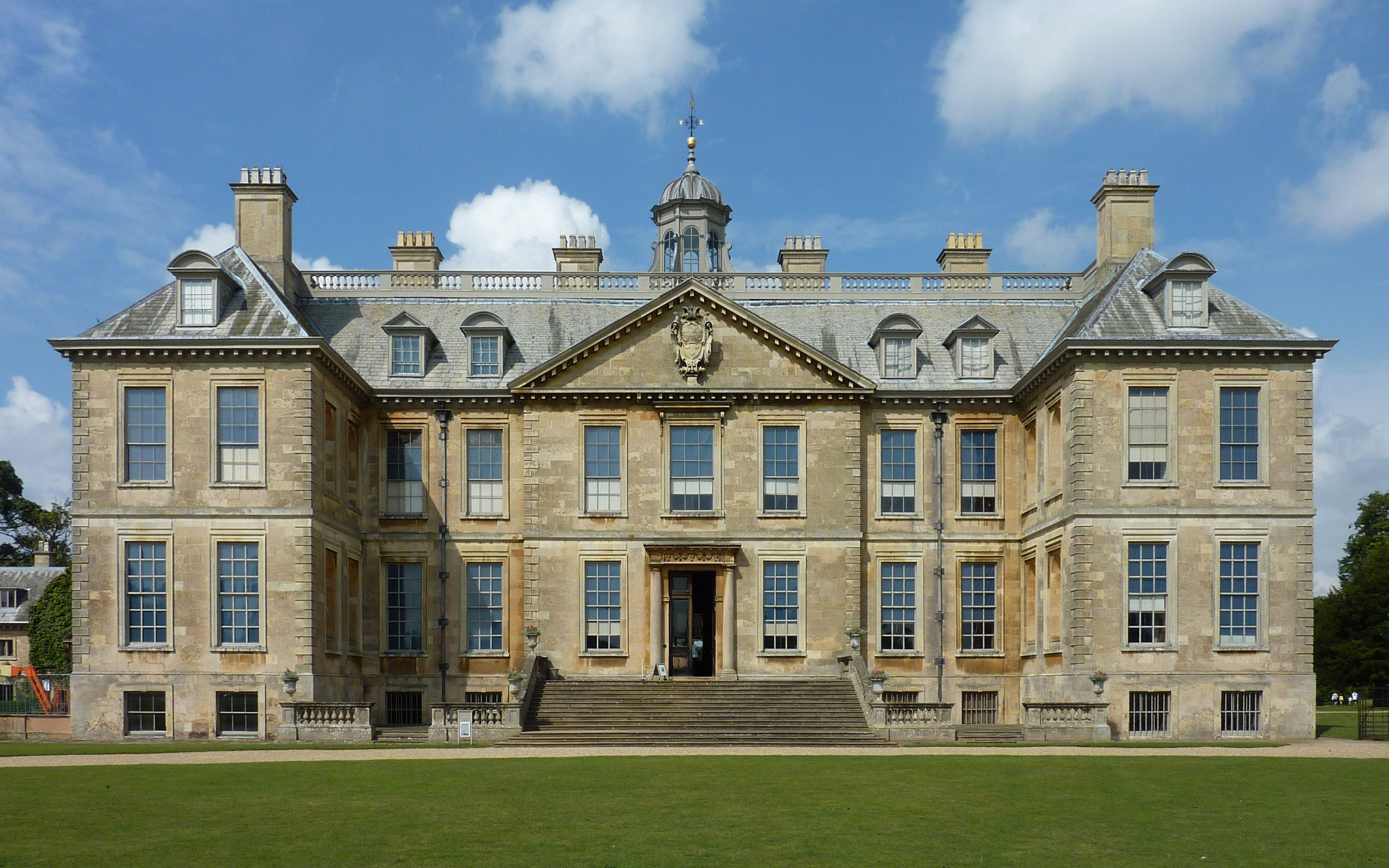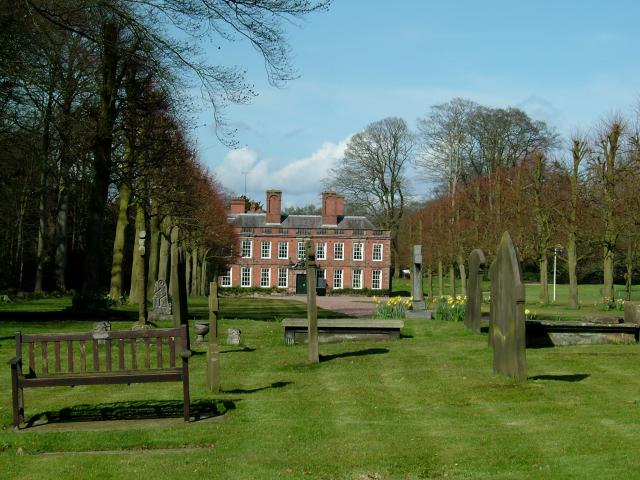|
Whitmore Hall
Whitmore Hall is the home of the Cavenagh-Mainwaring family at Whitmore, Staffordshire. A Grade I listed building, the hall was designated a house of outstanding architectural and historical interest and is a fine example of a small Carolean style manor house. History By the time of the Norman Conquest, the manor of Whitmore was held by one Richard the Forester. Whitmore appears in the Doomsday Book and is valued at 10 shillings.Pitt, p. 375 By 1204 it was owned by William Boterel, who was described as ''"Dominus de Whitmore juxta Nova Castrum sub Lina"'' (Lord of Whitmore near Newcastle-under-Lyme). The estate passed to the Mainwaring family in 1519, through the descendants of a Boterel heiress, Alice Boghay. Their descendants have owned the estate ever since. The Mainwarings of Whitmore are descended from the Mainwarings of Over-Peover, Cheshire (see the twentieth century Mainwaring Baronets). Five Edward Mainwarings served as High Sheriff of Staffordshire between 164 ... [...More Info...] [...Related Items...] OR: [Wikipedia] [Google] [Baidu] |
Restoration Style
Restoration style, also known as Carolean style from the name ''Carolus'' (Latin for 'Charles'), refers to the decorative and literary arts that became popular in England from the restoration of the monarchy in 1660 under Charles II (reigned from 1660 to 1685) until the late 1680s. Similar shifts appeared in prose style.James Egan, "‘For mine own private satisfaction’: Marvell's aesthetic signatures in the rehearsal Transpros'd." ''Prose Studies'' 22.3 (1999): 17-40. The return of the king and his court from exile on the Continent led to the replacement of the Puritan severity of the Cromwellian style with a taste for magnificence and opulence, and to the introduction of Dutch and French artistic influences. These are evident in furniture in the use of floral marquetry, walnut instead of oak, twisted turned supports and legs, exotic veneers, cane seats and backs on chairs, sumptuous tapestry and velvet upholstery, and ornate carved and gilded scrolling bases for cabinets. R ... [...More Info...] [...Related Items...] OR: [Wikipedia] [Google] [Baidu] |
High Sheriff Of Staffordshire
This is a list of the sheriffs and high sheriffs of Staffordshire. The sheriff is the oldest secular office under the Crown. The sheriff was the principal law enforcement officer in the county but over the centuries most of the responsibilities associated with the post have been transferred elsewhere or are now defunct so that its functions are now largely ceremonial. From 1204 to 1344 the High Sheriff of Staffordshire also served as Sheriff of Shropshire. Under the provisions of the Local Government Act 1972, on 1 April 1974 the office previously known as sheriff was retitled high sheriff. The high sheriff changes every March. Sheriffs 11th century * 1086: Robert de Stafford . * 1094: Nicholas de Stafford 12th century 13th century 14th century 15th century 16th century 17th century 18th century 19th century 20th century High sheriffs 20th century 21st century References * ''London Gazette'' * * ''History of Staffordshire'' from British History Onl ... [...More Info...] [...Related Items...] OR: [Wikipedia] [Google] [Baidu] |
Country Houses In Staffordshire
A country is a distinct part of the world, such as a state, nation, or other political entity. It may be a sovereign state or make up one part of a larger state. For example, the country of Japan is an independent, sovereign state, while the country of Wales is a component of a multi-part sovereign state, the United Kingdom. A country may be a historically sovereign area (such as Korea), a currently sovereign territory with a unified government (such as Senegal), or a non-sovereign geographic region associated with certain distinct political, ethnic, or cultural characteristics (such as the Basque Country). The definition and usage of the word "country" is flexible and has changed over time. ''The Economist'' wrote in 2010 that "any attempt to find a clear definition of a country soon runs into a thicket of exceptions and anomalies." Most sovereign states, but not all countries, are members of the United Nations. The largest country by area is Russia, while the smallest is ... [...More Info...] [...Related Items...] OR: [Wikipedia] [Google] [Baidu] |
Grade I Listed Buildings In Staffordshire
There are over 9000 Grade I listed buildings in England. This page is a list of these buildings in the county of Staffordshire, by district. City of Stoke-on-Trent Caverswall Castle, Caverswall East Staffordshire Lichfield District Newcastle-under-Lyme South Staffordshire Stafford Borough Staffordshire Moorlands Tamworth ReferencesNational Heritage List for England Notes External links {{GradeIListedbuilding Staffordshire Staffordshire (; postal abbreviation Staffs.) is a landlocked county in the West Midlands region of England. It borders Cheshire to the northwest, Derbyshire and Leicestershire to the east, Warwickshire to the southeast, the West Midlands Cou ... Lists of Grade I listed buildings in Staffordshire ... [...More Info...] [...Related Items...] OR: [Wikipedia] [Google] [Baidu] |
Listed Buildings In Whitmore, Staffordshire
Whitmore, Staffordshire, Whitmore is a civil parish in the district of Borough of Newcastle-under-Lyme, Newcastle-under-Lyme, Staffordshire, England. It contains 28 Listed building#England and Wales, listed buildings that are recorded in the National Heritage List for England. Of these, one is listed at Grade I, the highest of the three grades, four are at Grade II*, the middle grade, and the others are at Grade II, the lowest grade. The parish contains the village of Whitmore and the surrounding area. Most of the listed buildings are houses, cottages, farmhouses, and farm buildings. The other listed buildings include two churches, memorials in a churchyard, a English country house, country house with associated structures, the ruins of a former manor house, and five mileposts. __NOTOC__ Key Buildings References Citations Sources * * * * * * * * * * * * * * * * * * * * * * * * * * * * * * {{DEFAULTSORT:Whitmore, Staffordshire Lists of listed bui ... [...More Info...] [...Related Items...] OR: [Wikipedia] [Google] [Baidu] |
List Of Grade I Listed Buildings In Staffordshire
There are over 9000 Grade I listed buildings in England England is a country that is part of the United Kingdom. It shares land borders with Wales to its west and Scotland to its north. The Irish Sea lies northwest and the Celtic Sea to the southwest. It is separated from continental Europe b .... This page is a list of these buildings in the county of Staffordshire, by district. City of Stoke-on-Trent Caverswall Castle, Caverswall East Staffordshire Lichfield District Newcastle-under-Lyme South Staffordshire Stafford Borough Staffordshire Moorlands Tamworth ReferencesNational Heritage List for England Notes External links {{GradeIListedbuilding Staffordshire Lists of Grade I listed buildings in Staffordshire ... [...More Info...] [...Related Items...] OR: [Wikipedia] [Google] [Baidu] |
Elizabethan Architecture
Elizabethan architecture refers to buildings of a certain style constructed during the reign of Queen Elizabeth I of England and Ireland from 1558–1603. Historically, the era sits between the long era of the dominant architectural style of religious buildings by the Catholic Church, which ended abruptly at the Dissolution of the Monasteries from c.1536, and the advent of a court culture of pan-European artistic ambition under James I (1603–25). Stylistically, Elizabethan architecture is notably pluralistic. It came at the end of insular traditions in design and construction called the Perpendicular style in the church building, the fenestration, vaulting techniques, and open truss designs of which often affected the detail of larger domestic buildings. However, English design had become open to the influence of early printed architectural texts (namely Vitruvius and Alberti) imported to England by members of the church as early as the 1480s. Into the 16th century, illus ... [...More Info...] [...Related Items...] OR: [Wikipedia] [Google] [Baidu] |
Balustrade
A baluster is an upright support, often a vertical moulded shaft, square, or lathe-turned form found in stairways, parapets, and other architectural features. In furniture construction it is known as a spindle. Common materials used in its construction are wood, stone, and less frequently metal and ceramic. A group of balusters supporting a handrail, coping, or ornamental detail are known as a balustrade. The term baluster shaft is used to describe forms such as a candlestick, upright furniture support, and the stem of a brass chandelier. The term banister (also bannister) refers to a baluster or to the system of balusters and handrail of a stairway. It may be used to include its supporting structures, such as a supporting newel post. Etymology According to the ''Oxford English Dictionary'', "baluster" is derived through the french: balustre, from it, balaustro, from ''balaustra'', "pomegranate flower" rom a resemblance to the swelling form of the half-open flower (''illus ... [...More Info...] [...Related Items...] OR: [Wikipedia] [Google] [Baidu] |
King Charles II Of England
Charles II (29 May 1630 – 6 February 1685) was King of Scotland from 1649 until 1651, and King of King of England, England, Scotland and King of Ireland, Ireland from the 1660 Restoration of the monarchy until his death in 1685. Charles II was the eldest surviving child of Charles I of England, Scotland and Ireland and Henrietta Maria of France. After Execution of Charles I, Charles I's execution at Palace of Whitehall, Whitehall on 30 January 1649, at the climax of the English Civil War, the Parliament of Scotland proclaimed Charles II king on 5 February 1649. But England entered the period known as the English Interregnum or the English Commonwealth, and the country was a de facto republic led by Oliver Cromwell. Cromwell defeated Charles II at the Battle of Worcester on 3 September 1651, and Charles Escape of Charles II, fled to mainland Europe. Cromwell became virtual dictator of England, Scotland and Ireland. Charles spent the next nine years in exile in France, the Dutc ... [...More Info...] [...Related Items...] OR: [Wikipedia] [Google] [Baidu] |
Whitmore, Staffordshire
Whitmore is a village and small curacy in the county of Staffordshire, England, near Newcastle-under-Lyme. The name ''Whitmore'' can be found in the Domesday book (as Witemore) and also when King John signed '' Magna Carta'' at Runnymede Runnymede is a water-meadow alongside the River Thames in the English county of Surrey, and just over west of central London. It is notable for its association with the sealing of Magna Carta, and as a consequence is, with its adjoining .... Whitmore Hall, designated a house of outstanding architectural and historical interest and a fine example of a small Carolean-style manor house, is the home of the Cavenagh-Mainwaring family. See also * Listed buildings in Whitmore, Staffordshire References External links Villages in Staffordshire Borough of Newcastle-under-Lyme {{Staffordshire-geo-stub ... [...More Info...] [...Related Items...] OR: [Wikipedia] [Google] [Baidu] |
Newcastle-under-Lyme
Newcastle-under-Lyme ( RP: , ) is a market town and the administrative centre of the Borough of Newcastle-under-Lyme in Staffordshire, England. The 2011 census population of the town was 75,082, whilst the wider borough had a population of 128,264 in 2016, up from 123,800 in the 2011 Census. Toponym The name "Newcastle" is derived from a mid 12th century motte and bailey that was built after King Stephen granted lands in the area to Ranulf de Gernon, Earl of Chester; the land was for his support during the civil war known as The Anarchy. "Lyme" might refer to the Lyme Brook or the Forest of Lyme (with lime and elm trees) that covered an extensive area across the present day counties of Cheshire, Staffordshire and parts of Derbyshire. History 12th–19th centuries Newcastle was not recorded in the 1086 Domesday Book, as it grew up round a 12th-century castle, but it must have gained rapid importance, as a charter, known solely through a reference in another charter to Presto ... [...More Info...] [...Related Items...] OR: [Wikipedia] [Google] [Baidu] |



_cropped_2.jpg)

